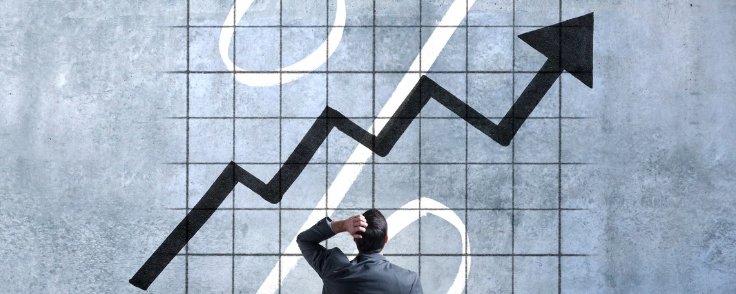
Why Waiting on Rates Costs You: Save Big Now!
- Ian S. Hoover
- 0
- Posted on
Interest rates are a hot topic these days, with many people eagerly awaiting a drop before making big moves like buying a home. But here’s the thing: the current rates—hovering around 6-7% as of April 2025—are actually a steal when you zoom out and look at the last 100 years. Historically, mortgage rates have averaged closer to 7.5-8%, with peaks hitting double digits in the 1980s when 30-year fixed rates soared to over 18%. Compared to that, today’s rates are not just reasonable—they’re fantastic. Yet, the narrative persists: “I’ll wait for rates to come down before I buy.” Let’s unpack why that might not be the smartest strategy and why locking in a rate now could be the shrewdest move you make.
The Historical Perspective: Rates Aren’t as High as You Think
To put things in context, the average 30-year fixed mortgage rate from 1971 to 2023 was approximately 7.74%, according to data from Freddie Mac. In the 1970s and ‘80s, rates regularly exceeded 10%, peaking at 18.63% in October 1981. Even in the 1990s, rates rarely dipped below 7%. The ultra-low rates of the 2010s and early 2020s—where we saw numbers as low as 2.65% in January 2021—were an anomaly, driven by extraordinary economic conditions like the Great Recession and the COVID-19 pandemic. Today’s rates, while higher than that recent low, are still well below the long-term average. Waiting for a return to 3% could mean waiting for a once-in-a-generation event that may not happen again anytime soon.
The Flawed Logic of Waiting
The idea of holding off on a home purchase until rates drop assumes you can predict the future—a risky bet. Interest rates are influenced by a complex mix of factors: inflation, Federal Reserve policy, global economic conditions, and more. No one, not even the experts, can say with certainty whether rates will rise or fall in the next few years. If you wait and rates drop, sure, you could score a lower monthly payment. But if they climb instead—and many analysts believe we’re trending toward higher rates as inflation pressures linger—you’ll be kicking yourself for not locking in today’s “fantastic” rate.
Here’s the kicker: if you buy now and rates do drop later, you’re not stuck. Refinancing is an option. Yes, it comes with costs—typically 2-5% of the loan amount, or about $5,000-$10,000 on a $300,000 mortgage—but if rates fall significantly (say, by 1-2%), the savings over a 30-year loan can far outweigh that upfront expense. On the flip side, if rates rise to 10-12%—a plausible scenario given historical norms—you’ll be sitting pretty with your lower, locked-in rate while others scramble to afford homes at higher borrowing costs.
The Counterargument: High Home Prices and Rate Hikes
Some argue that today’s home prices, which are at all-time highs, make it a bad time to buy—especially if the Federal Reserve raises rates further to combat inflation. Higher rates mean higher monthly payments, potentially pricing out buyers and cooling the market. This could flip us into a buyer’s market, where sellers lower prices to attract offers. It’s a fair point: affordability is stretched thin. The median home price in the U.S. hit $412,300 in Q1 2025 (per National Association of Realtors estimates), up from $357,300 just five years ago. Pair that with a 7% rate, and the math gets tough for many.
But here’s where real estate trends come into play. We haven’t seen a true buyer’s market since the 2008-2011 mortgage crisis, a period marked by oversupply and economic collapse. Today’s market dynamics are different. Inventory remains stubbornly low—nationally, we’re at about 2.9 months of supply as of early 2025, well below the 6-month benchmark for a balanced market. In places like Pittsburgh, a market I know well as a real estate expert, inventory has been a quarter to a third of historical norms for over a decade. Low supply keeps demand high, even as rates creep up. This suggests that even if rates hit 10%, we might not see a buyer’s market. Instead, prices could stabilize or grow more slowly, but sellers would retain leverage—especially those with assumable mortgages at lower rates, a rare perk that could command a premium.
Low Inventory, High Demand
My market Pittsburgh exemplifies this trend. With a median home price of $230,000 (still below the national average), the city has seen steady demand despite rate hikes. Why? Low inventory and a resilient local economy. Over the past decade, Pittsburgh’s housing stock has lagged behind population needs, partly due to slow new construction and homeowners staying put. Even if rates rise, buyers may keep competing for scarce homes, and sellers could sweeten deals with assumable loans—say, a 4% rate from 2021—making their properties more attractive than new listings at 10%. This dynamic could keep Pittsburgh a seller’s market, defying the cooling effect of higher rates.
The Smart Play: Buy Now, Adapt Later
So, what’s the takeaway? Stop trying to time the market—it’s a fool’s errand. Buy now if you can afford it, lock in today’s rate (which, historically speaking, is a bargain), and stay flexible. If rates drop, refinance and pocket the savings. If they rise, you’re protected. The real risk isn’t buying at 7%; it’s waiting too long and facing 12% with no leverage in a still-competitive market. Housing trends suggest we’re years away from a buyer’s paradise, and in tight markets like Pittsburgh, that shift might never fully materialize.
For more data, check Freddie Mac’s historical rate archives:
or the National Association of Realtors’ market reports:
The numbers don’t lie—and neither does a century of real estate wisdom.
